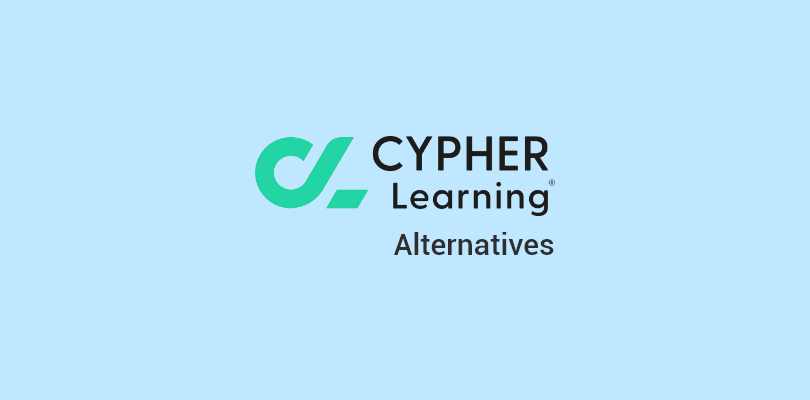Looking for the best SaaS LMS systems out there? I can help you.
As an eLearning professional, I felt limited by using a self-hosted LMS. Such an LMS presents many issues, including complexity in installation and maintenance, and problems with scalability, safety, and cost.
That’s why I started using SaaS LMS platforms, and they have been treating me well.
If you, too, are interested in a SaaS learning management system, this guide will answer all your questions about these platforms.
Let’s start!
| SaaS LMS Tools | Best For | Pricing |
|---|---|---|
| ProProfs Training Maker | Employee Training | Forever free for small teams. Paid plan starts at$1.99/learner/month. |
| Docebo | Complex Enterprise Training | Custom quote |
| Canvas LMS | K-12 Learners | Custom quote |
| Absorb LMS | Complex Training Needs | Custom quote |
| Moodle | Open-Source LMS | Custom quote |
| LearnUpon | Training Delivery | Custom quote |
| CYPHER Learning | Automated Learning | Custom quote |
| iSpring Learn | PowerPoint Conversion | Starts at $2.29/user/month |
| Blackboard Learn | Community-Based Learning | Custom quote |
| LearnWorlds | Creating & Selling Online Courses | Starts at $24/month |
| Trainn | Saas Customer Education | Starts at $7.5/learner/month |
What Is a SaaS LMS?
SaaS learning management systems are cloud-based platforms that allow organizations to create, manage, deliver, track, and analyze online training programs and learning activities.
Unlike a traditional LMS, which requires installation on local servers, a SaaS LMS operates on a subscription basis and is hosted in the cloud by a third-party provider. This means learners and instructors can access it from anywhere with an internet connection.
SaaS LMS vs Hosted LMS: Main Differences
In the world of e-learning, choosing the right LMS can significantly influence the success of your training programs. The debate often narrows down to two popular choices: SaaS LMS and Hosted LMS.
Each offers unique benefits and caters to different organizational needs.
To help you decide which type best suits your training department, let’s dive into the main differences between these two LMS solutions.
| Feature | SaaS LMS | Hosted LMS |
|---|---|---|
| Deployment | Cloud-based | Installed on premise on a local server |
| Setup Time | Quick setup, almost immediate | Requires time for installation and configuration |
| Cost | Subscription-based, generally lower upfront costs | Higher initial costs due to setup and hardware |
| Scalability | Highly scalable with easy adjustments to user base | Scalability depends on server capacity |
| Data Control | Vendor controls the data, with limited access | Complete control over data and security |
| Customization | Limited customization depending on the provider | Highly customizable to fit specific needs |
| Maintenance | Vendor responsible for updates and maintenance | Your responsibility to maintain and update software |
| Access | Accessible from anywhere with internet | Typically accessed via the corporate network |
Choosing between a SaaS LMS and a hosted LMS involves considering your organization’s specific needs, including budget, IT resources, and how much control you need over your data.
A SaaS LMS offers ease and efficiency, perfect for those who prefer a hands-off approach and need quick deployment. On the other hand, a hosted LMS is ideal for organizations requiring deep customization and full control over their training environment. Your choice will shape the training experience you can offer, so weigh these differences carefully.
Need a Scalable & Flexible SaaS LMS?
Train your workforce anytime, anywhere with a cloud-based LMS.
Get Free LMS Software — All Features, Forever.
We've helped 567 companies train 200,000+ employees. Create courses in under a minute with our AI LMS or use 200+ ready-made courses on compliance, harassment, DEI, onboarding, and more!
Key Features of SaaS Learning Management Systems
When considering SaaS LMS platforms, it’s crucial to understand their core features, which make them effective for learners and administrators.
Most LMS SaaS vendors offer a range of functionalities designed to enhance the learning experience, streamline administrative tasks, and provide robust support for various training needs.
Here are some key features you should look for:
- Course Management: Easily create and deliver course content. Supports multiple formats like PDFs, videos, and live sessions.
- Ready-to-Use Courses and Templates: Jumpstart your training with pre-built courses and templates. These ready-to-use resources save time and effort, letting you focus on delivering quality education

- User Management: Add users and groups based on departments, locations, courses, and other criteria for ease of training administration.
- Multiple Instructors: Support for multiple instructors allows you to bring diverse expertise into your courses. This also helps if you’re having multiple classrooms.
- SCORM & xAPI Compliance: Upload and manage SCORM and xAPI files seamlessly.
- Learning Portals: Create separate portals for different departments or audiences.
- Branding & White-Labeling: Customize the LMS with your logo, colors, and themes. Most SaaS LMS providers offer white labeling features.
- Integrations: Leverage powerful LMS integrations and connect with HR systems, CRM, and webinar tools. Automate tasks with Single Sign-On (SSO) and APIs.
- Automation: Reduce admin tasks with automated self enrollments and notifications.

- Learner Experience: User-friendly interface, accessible on any device. Supports self-directed learning with course catalogs.
- Exams & Surveys: Test learner knowledge and gather feedback directly within the LMS.
- Webinar Integration: Schedule and manage webinars with tools like WebinarNinja, Zoom, and MS Teams.
- Blended Learning: Combine online and in-person training methods for a personalized experience.
- Gamification: Engage learners with badges, points, and leaderboards.
- User Roles & Permissions: Create and manage user roles to streamline training management.
- Social Learning Tools: Facilitate interaction and knowledge sharing among learners.
- Reporting: Track learner progress and generate detailed reports.
- Skills & Certification Tracking: Manage and track certifications and skills development.
- E-commerce: Sell courses and manage payments through integrated gateways.
- Learning Paths: Automate course sequencing and learner progress tracking.

- Notifications & Reminders: Send automated alerts to keep learners on track.
- Multilingual: Support learners in learning in their native language.

- Security & Reliability: Ensure data protection and high uptime.
- Remote/Mobile Workforce-Ready: Train employees on the go with mobile-friendly features.
- Single Sign-On: Simplify login processes with one set of credentials.
So, there you have it – all the features of a SaaS LMS worth considering.
What Are the Benefits of Using a SaaS LMS?
As a professional in the training industry, I’ve found that a SaaS-based LMS can be transformative. Let me explain how this system has benefitted my organization, which goes beyond the basic features.
- First, SaaS LMS have helped us with automation, which has reduced manual labor and repetitive tasks. The tool has helped us automate user registrations and enrollments based on predefined criteria. This eliminates manual entry and ensures accuracy and efficiency in managing learner pathways.
- Second, advanced reporting by an LMS allowed me to track learner progress and engagement in real time. Based on data-driven insights, I can see which modules are most effective and which need improvement. This helps me fine-tune our courses.
- Additionally, the ability to integrate with other tools via APIs has significantly broadened the functionality of our LMS. By connecting with tools like CRM systems, webinar platforms, and content repositories, we can provide a seamless learning experience that supports diverse learning styles and needs.
- Finally, the LMS has provided robust security features that protect our digital learning content and user data. Features like encryption and access controls ensure that sensitive information remains secure, crucial for maintaining trust and compliance.
The best part? It has greatly reduced our training costs.
So, using an LMS has fundamentally transformed how we manage, deliver, and optimize our training programs, making it an indispensable tool in our educational arsenal.
Read more about the benefits of learning management systems.
Case Study: How KDD Transformed Employee Training & Significantly Reduced Costs
Factors to Consider When Choosing the Best LMS
Choosing the best LMS takes a lot of considerations.
Here are some business examples to illustrate the factors you should consider:
1. Small Tech Startups
- Needs: Cost-effective solutions, scalable for future growth, support for technical training.
- Required LMS Features: Flexible pricing, integration with coding platforms, interactive tutorials, quizzes, collaboration tools, and real-time feedback mechanisms. Startups benefit from rapid course creation tools and virtual classrooms that support live coding sessions alongside adaptive learning paths tailored to tech skills.
2. Large Corporations
- Needs: Scalability, multilingual support, robust user management, and compliance tracking.
- Required LMS Features: Advanced reporting and analytics, multi-language support, integration with HR and CRM systems, and compliance tracking. For such a vast entity, the LMS should offer extensive course creation capabilities, virtual classrooms for global training sessions, and highly structured learning paths to ensure consistent training across different geographies.
3. Educational Institutions
- Needs: Support for various content formats, personalized learning paths, and mobile accessibility.
- Required LMS Features: Flexible course creation, mobile-friendly design, support for videos, PDFs, SCORM, and offline access. Educational institutions require robust virtual classroom features to simulate a real classroom experience and versatile learning paths that accommodate a range of academic disciplines.
4. Healthcare Organizations
- Needs: Compliance tracking, detailed performance tracking, and integration with existing healthcare systems.
- Required LMS Features: Compliance tracking, advanced reporting, integration with healthcare management systems, automated reporting, and secure data handling. The LMS should facilitate the creation of specialized courses for healthcare protocols, virtual classrooms for scenario-based training, and customizable learning paths for various medical fields.
5. Sales and Marketing Firms
- Needs: Interactive modules, video tutorials, and integration with CRM systems.
- Required LMS Features: Quizzes, interactive modules, video tutorials, seamless integration with CRM systems like Salesforce. A sales-focused LMS should include quick course creation tools for product updates, virtual classrooms for interactive sales training, and dynamic learning paths that adjust to market trends.
6. Field Service Companies
- Needs: Mobile-friendly design, offline access, and easy navigation.
- Required LMS Features: Mobile accessibility, intuitive interface, offline access to training materials, and push notifications. Field service companies need an LMS that offers straightforward course creation to quickly update on-the-go instructions, mobile-oriented virtual classrooms, and flexible learning paths for diverse field scenarios.
Non-Profit Organizations
- Needs: Cost-effective solutions, customizable branding, and ease of use.
- Required LMS Features: Customizable themes, flexible course creation, intuitive interface, extensive documentation. Non-profits benefit from an LMS that provides simple yet effective course creation tools, virtual classrooms that facilitate widespread volunteer training, and adaptable learning paths that cater to varied volunteer roles.
Each business requires a unique combination of features to match its specific needs. By identifying these needs and evaluating the LMS features accordingly, you can ensure the best fit for your organization.
Here’s a quick video on: How to Choose the Best SaaS LMS Software
Get Free LMS Software — All Features, Forever.
We've helped 567 companies train 200,000+ employees. Create courses in under a minute with our AI LMS or use 200+ ready-made courses on compliance, harassment, DEI, onboarding, and more!
List of 11 best SaaS Learning Management Systems in 2025
I curated this list of SaaS LMS based on my first-hand experience, in-depth research, and recommendations from peers who have used these tools. I also considered neutral reviews on third-party sites and client testimonials.
1. ProProfs Training Maker – Best for Employee Training
I’ve found that ProProfs Training Maker is easy to use. It excels in offering an extensive range of tools for course creation, management, sharing, tracking, and analysis. I have access to a library of hundreds of SME-taught courses, making it quick to start.
The platform integrates built-in quizzes, collaboration forums, virtual classrooms, and learning pathways, enabling comprehensive eLearning experiences. Additionally, it supports eCommerce and certification capabilities, which are crucial for monetizing courses and validating learner achievements. Also, when it comes to this SaaS LMS pricing, let me tell you, it’s absolutely free for small teams.
Best Suited For:
- Organizations of any size looking for an easy-to-use, comprehensive LMS solution.
- Teams that require flexibility in training delivery, catering to both in-house and remote learners.
- Instructors who appreciate pre-built resources and quick customization options.
Not Suited For:
- Organizations looking for a downloadable or on-premise version of the LMS
- Users who prefer a dark user interface option, which is not available on this platform.
- Teams that expect a dedicated account manager with the free plan.
Pricing:
Forever free plan for small teams. The paid plan starts at $1.99/learner/month. 15-day money-back guarantee. No hidden charges.
2. Docebo – Best for Complex Enterprise Training
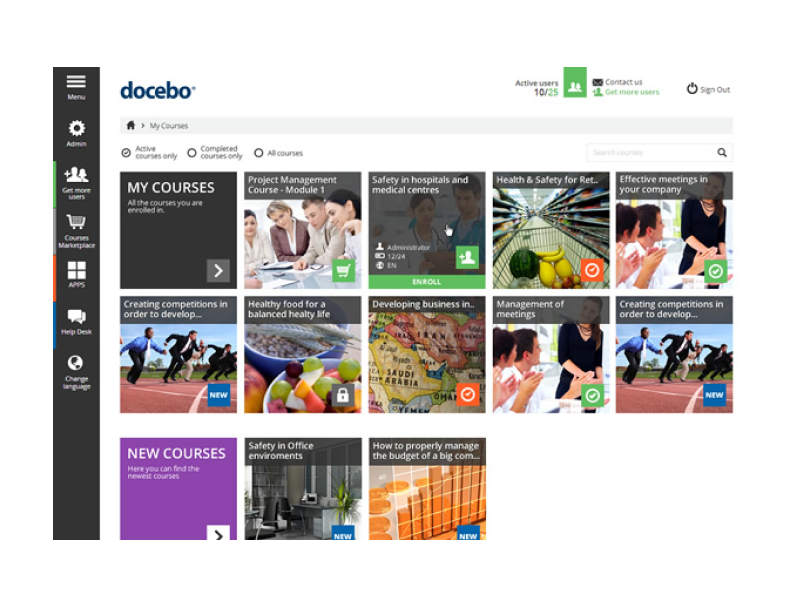
Docebo uses the latest technology to help with complex training needs worldwide. Docebo effectively addresses complex training needs through its advanced architecture, which includes customizable learning paths, robust analytics, and seamless integration capabilities. The platform supports various learning methods and is mobile-friendly.
AI features personalize learning and automate tasks. This all adds to a flexible, efficient solution for diverse training needs. Plus, it’s great for learning on the go, not just at a desk. With cool AI features like auto-tagging, content suggestions, and virtual coaching, managing everything becomes much easier. This lets you focus more on making your training better.
Best Suited For:
- Large enterprises with complex, dynamic training needs.
- Organizations looking to align employee development with strategic business goals.
- Companies seeking a modern, mobile-friendly learning environment that supports continuous education.
Not Suited For:
- Small to medium enterprises (SMEs) looking for flexible pricing options.
- Organizations need capabilities for large video uploads or live video training sessions.
Pricing:
Custom quote
3. Canvas LMS – Best for K-12 Learners
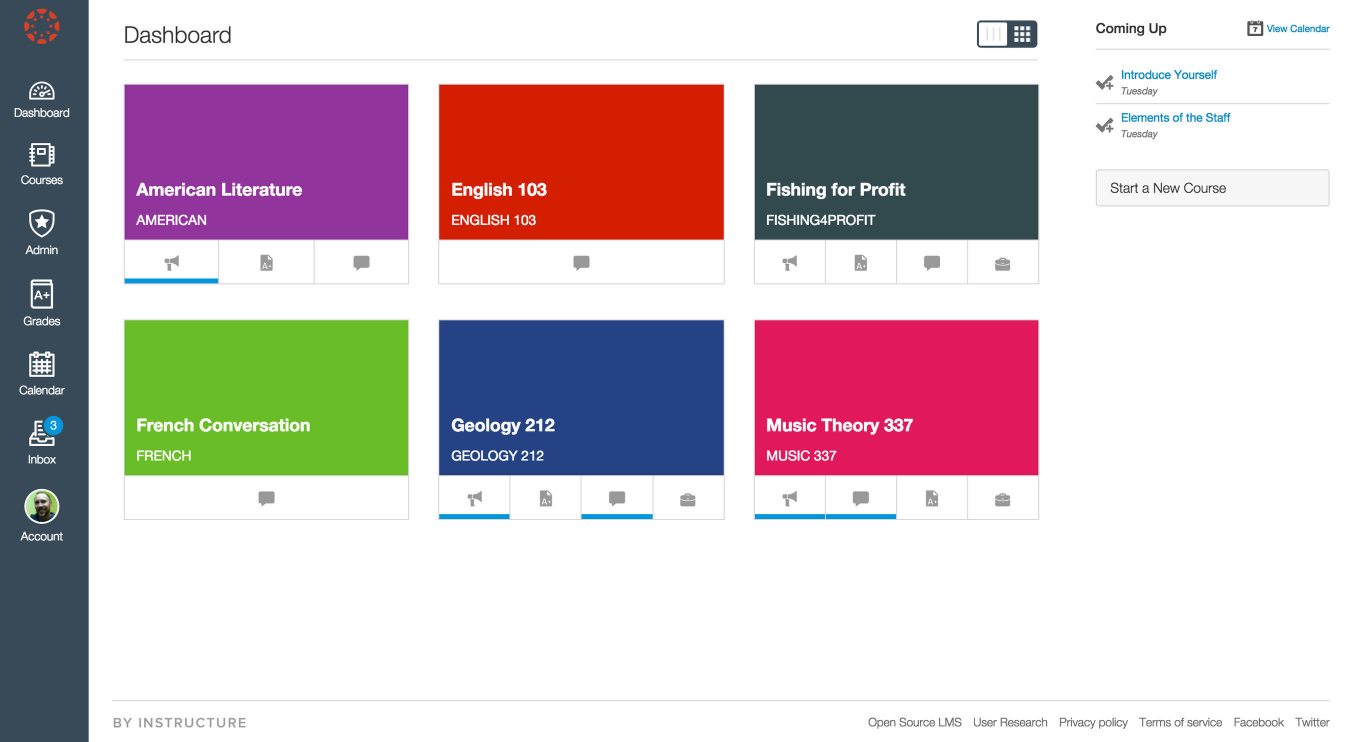
Canvas by Instructure integrates essential teaching and learning tools into one seamless interface. It is one of the best SaaS LMS systems for K-12, offering access to course materials, communication tools, participation and grade tracking, and comprehensive data insights.
The system supports both desktop and mobile devices, enabling learning from anywhere. Additionally, Canvas Studio turns passive video viewing into active and engaging discussions. It transforms classroom learning by supporting in-person, blended, and online instruction. With its intuitive design, Canvas helps teachers create engaging lessons, manage student progress, and facilitate communication.
Best Suited For:
- Schools and educational institutions seeking a comprehensive, scalable LMS.
- Educators needing a platform that supports both synchronous and asynchronous learning.
- Institutions that require strong integration capabilities with other educational tools.
Not Suited For:
- Organizations looking for a low-cost or free LMS solution.
- Small institutions or individual educators may find the system too complex.
- Users needing offline access to learning materials and interactions.
Pricing:
Custom quote
4. Absorb LMS – Best for Complex Training Needs
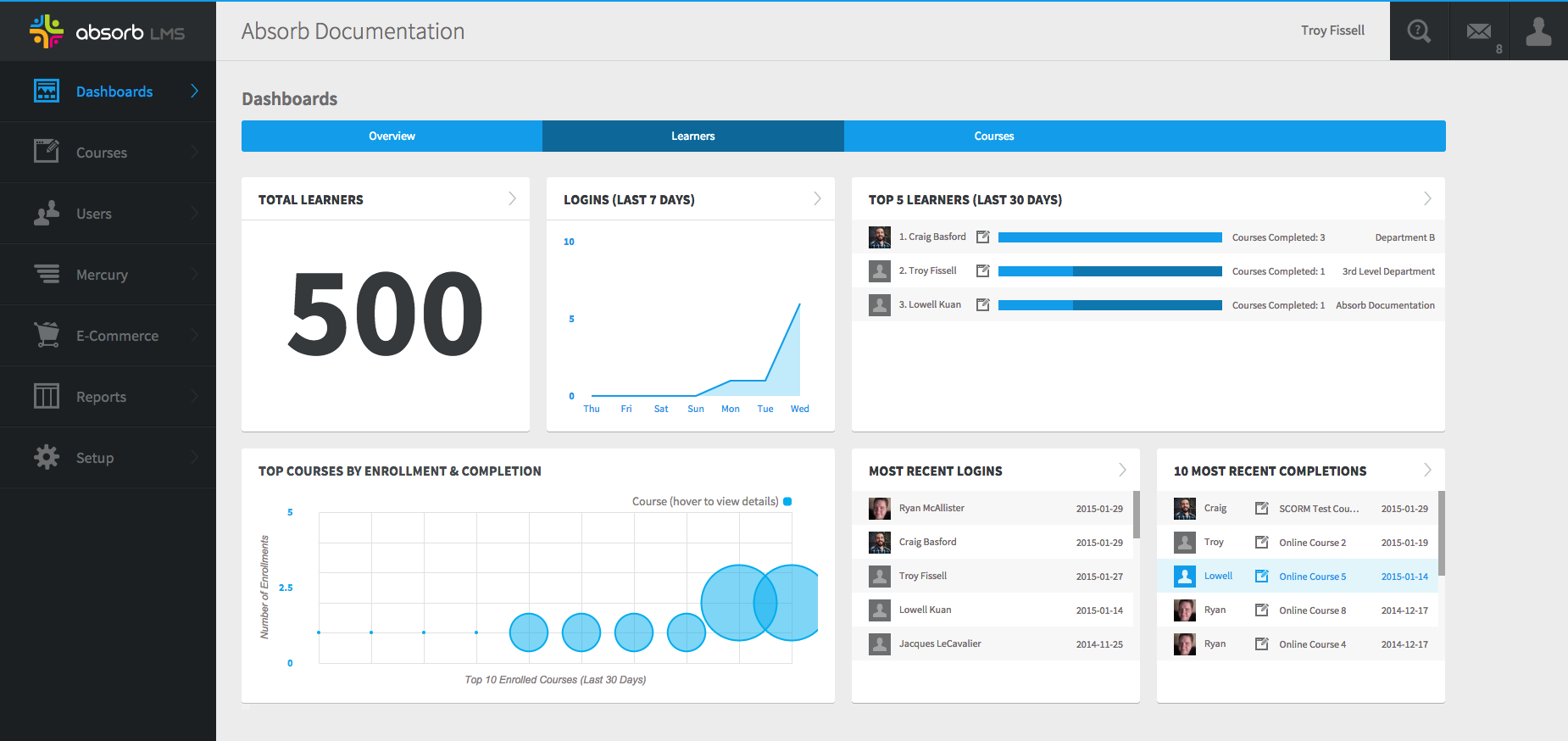
Absorb LMS doesn’t just absorb your training needs—it excels at them! This user-friendly and customizable platform is designed to support complex training needs. Absorb LMS makes handling complex training a breeze! With its customizable course structures and adaptive learning paths, it’s like having a personal training assistant. The user-friendly interface simplifies creating and managing courses, while detailed analytics keep you in the loop on how everyone’s doing.
Known for creating engaging learning experiences more addictive than your favorite TV series, Absorb LMS keeps learners returning for more. It’s no wonder this award-winning LMS is a favorite among some of the largest brands, helping companies start strong and grow their learning strategies over time.
Best Suited For:
- Large enterprises looking for a scalable and robust training solution.
- Organizations that prioritize a high-quality user experience for both learners and administrators.
- Companies in need of a reliable LMS to support continuous learning and development.
Not Suited For:
- Small businesses might find the platform too extensive or costly.
- Organizations that need advanced project management tools integrated with their LMS.
- Companies looking for flexible assessment tools.
Pricing:
Custom quote
5. Moodle – Best for Open-Source LMS
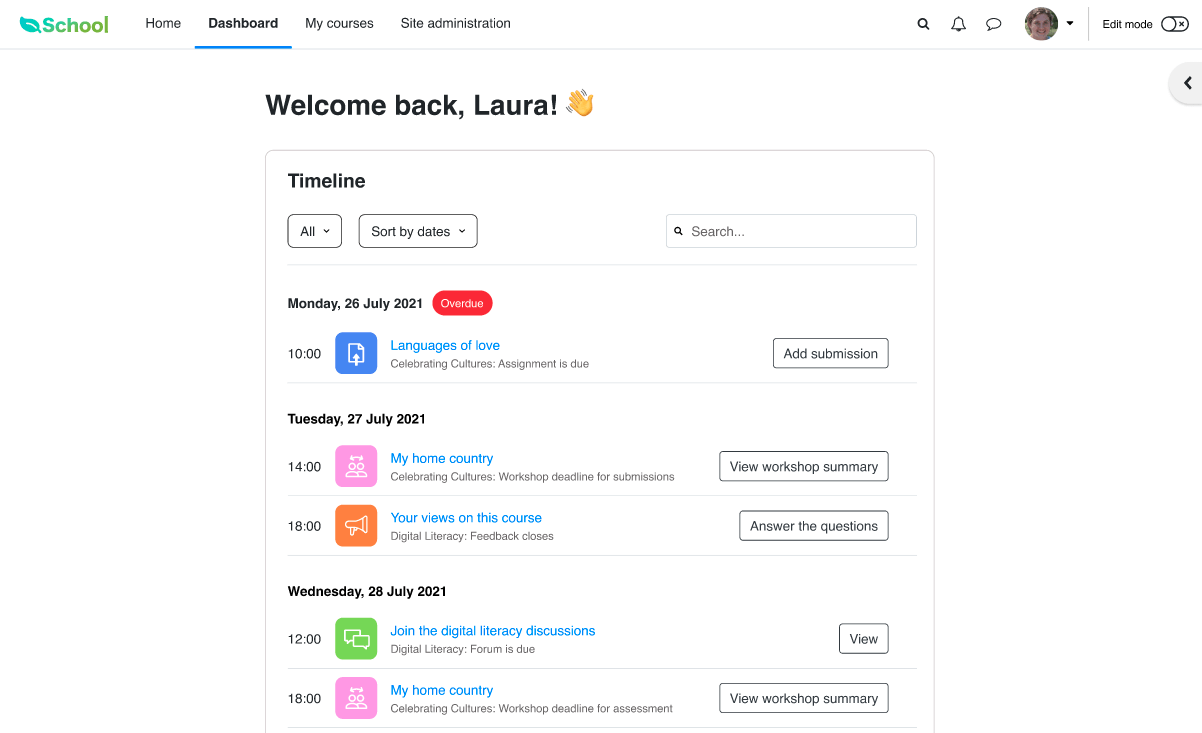
Moodle is the best LMS SaaS tool known for its extensive range of customization. As an open-source platform, it allows me to teach and learners to learn in ways that best suit our needs. Being open-source means it’s highly customizable—you can tweak it to fit your needs without any hefty price tags. Whether you’re running a small course or a large institution, Moodle’s flexibility shines through with a vast array of plugins and integrations
Moodle supports a wide range of multimedia content, which lets me incorporate videos, documents, and interactive elements into the courses. A key strength I’ve noticed is its vibrant and supportive community, which contributes actively to its development and offers a wealth of plugins and integrations.
Best Suited For:
- Educational institutions and corporations looking for a customizable LMS.
- Organizations that value community support and the ability to extend platform capabilities through plugins.
- Users who appreciate having control over the learning environment with the flexibility to shape it according to their needs.
Not Suited For:
- Users looking for advanced, out-of-the-box reporting features.
- Organizations that prefer a plug-and-play solution without the need for extensive configuration.
- Small teams without a professional IT staff to manage and maintain the LMS.
Pricing:
Custom quote
6. LearnUpon – Best for Training Delivery
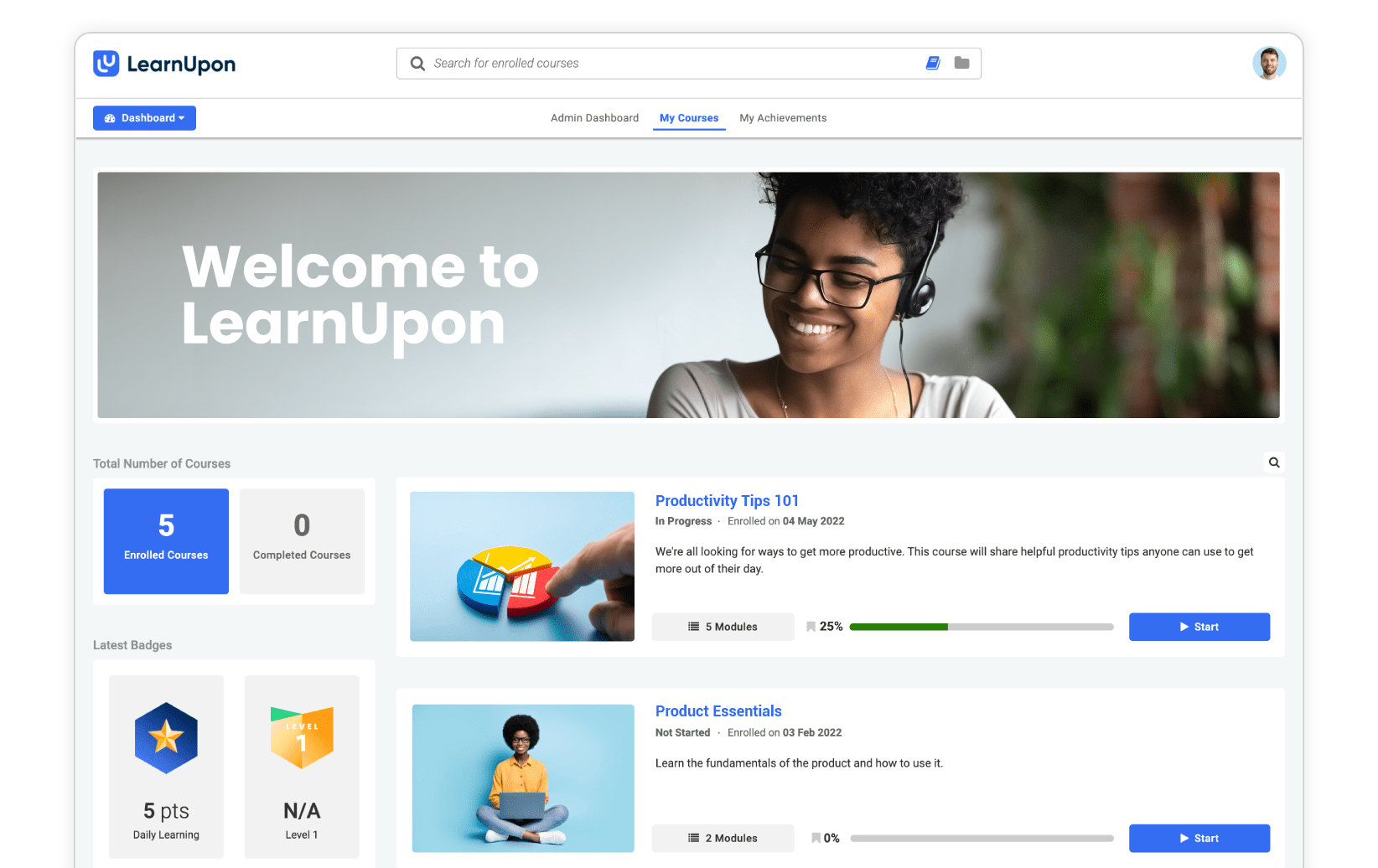
LearnUpon offers a robust training delivery system designed to suit both formal and informal learning styles within an organization. LearnUpon also allows for the creation of structured training programs through learning paths, where you can link courses together and define sequences or let learners choose their order of completion.
Furthermore, the platform supports both mandatory and self-serve training options, giving learners the autonomy to enroll themselves in courses. With features like dashboards, training history, and an extensive course catalog, LearnUpon empowers learners to manage their training efficiently while providing all the necessary resources in one place.
Best Suited For:
- Organizations looking to provide a flexible mix of mandatory and self-directed learning.
- Enterprises needing to scale up their training efforts quickly and effectively through robust integrations and automated workflows.
- Educational institutions or businesses that require a comprehensive overview of learner progress and training outcomes.
Not Suited For:
- Smaller organizations may find the platform too comprehensive and potentially overwhelming.
- Those who need advanced reporting capabilities for detailed analytics.
- Users who want a simple LMS with minimal setup and low maintenance.
Pricing:
Custom quote
7. CYPHER Learning – Best for Automated Learning
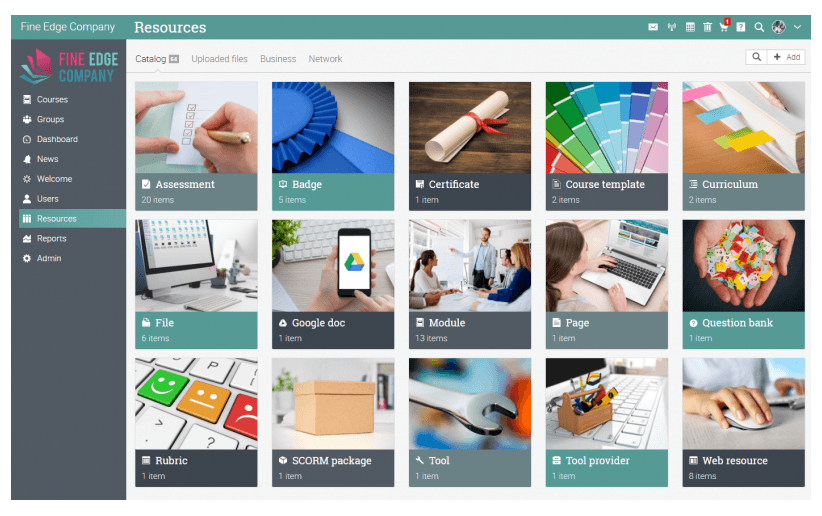
CYPHER Learning has a flagship product, NEO LMS, which represents what I see as a “New Era of Learning Management Systems.” This cloud-based platform facilitates online learning and training, which is extremely useful for schools, universities, and corporate organizations like ours. CYPHER Learning automates the training process by leveraging advanced AI to streamline course creation and management. Its AI 360 with Copilot enables rapid development of competency-based courses, assessments, and multimedia content in minutes.
It includes essential features such as course management, personalization, collaboration, grading, and assessment. I appreciate the mobile accessibility, automation capabilities, and comprehensive reporting and analytics, which enhance efficiency and save time through workflow automation.
Best Suited For:
- Educational institutions and corporate organizations that require robust, scalable online training solutions.
- Users looking for a platform with strong automation and personalization capabilities to streamline learning processes.
- Organizations that value a user-friendly interface to enhance the teaching and learning experience for both instructors and learners.
Not Suited For:
- Organizations or users who require extensive formatting options within the LMS.
- Those who rely heavily on email notifications, as there are reported issues with this feature in NEO LMS.
- Users who prefer highly sophisticated mobile applications, such as the current mobile app, may need further improvements.
Pricing:
Custom quote
8. iSpring Learn – Best for PowerPoint Conversion
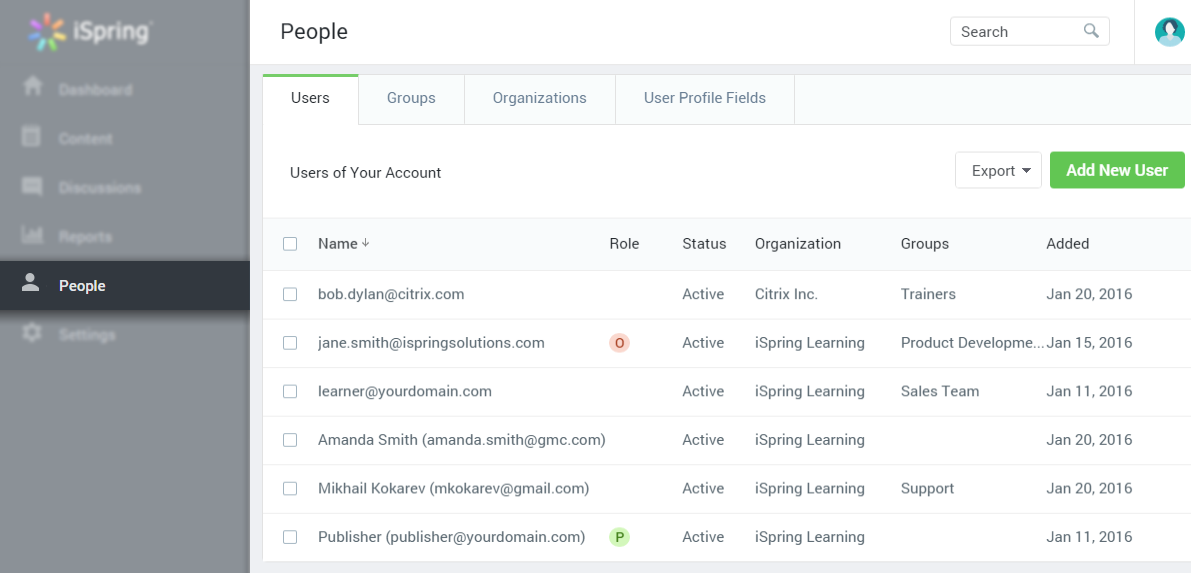
For over 20 years, iSpring Learn has been a significant player in the eLearning industry, and I’ve consistently seen it help businesses and teams through robust employee training and development tools. This SaaS LMS system offers valuable capabilities such as employee upskilling through quality training and improved workflow via time-saving automation.
The platform is known for its unique PPT to HTML5 conversion feature, which allows easy custom course authoring directly from PowerPoint presentations, enhancing the ease of content creation. The platform maintains high performance, reliability, and availability, even during peak usage or when handling many concurrent learners.
Best Suited For:
- Large organizations require a reliable and scalable solution for extensive training programs.
- Businesses looking to automate parts of their training processes to save time and enhance learning outcomes.
- Companies with a global presence need a platform to deliver consistent training to learners regardless of geographical location.
Not Suited For:
- Organizations that need support for multiple languages may find the platform’s limited language options a constraint.
- New users or smaller teams might require a simpler platform that’s easier to learn and use.
- Companies that value social learning as a key feature of their training strategy, as this feature is missing from iSpring Learn.
Pricing:
Starts at $2.29/user/month, billed annually
9. Blackboard Learn – Best for Community-Based Learning
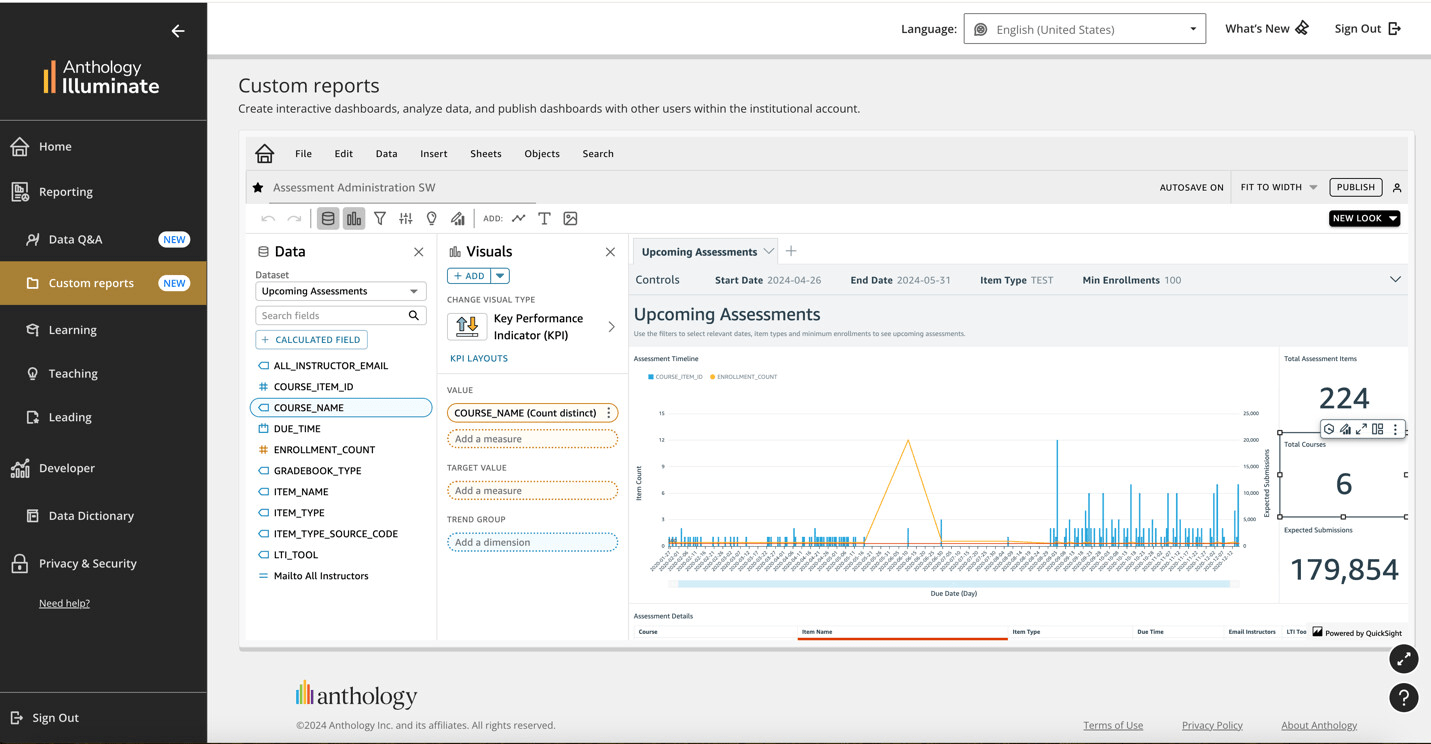
Blackboard Learn boasts a robust infrastructure and powerful tools, making it highly adaptable and scalable for delivering engaging and interactive learning experiences. One of the most compelling aspects I like is its extensive collaborative community features.
It supports seamless communication among learners and instructors through discussion boards, chat rooms, video conferencing, and group projects. The platform’s advanced automated grading feature significantly reduces the administrative load on instructors, which provides timely feedback to learners.
Best Suited For:
- Educational institutions and corporate training programs looking for a robust, scalable LMS.
- Organizations that prioritize collaboration and community-building among learners and instructors.
- Users need strong assessment and automated grading capabilities to enhance learning outcomes and operational efficiency.
Not Suited For:
- Users who require a highly intuitive and easy-to-navigate LMS without a steep learning curve.
- Those who depend heavily on mobile learning.
- Organizations looking for an advanced messaging system within their LMS, as the current offering could use improvement.
Pricing:
Custom quote
10. LearnWorlds – Best for Creating & Selling Online Courses
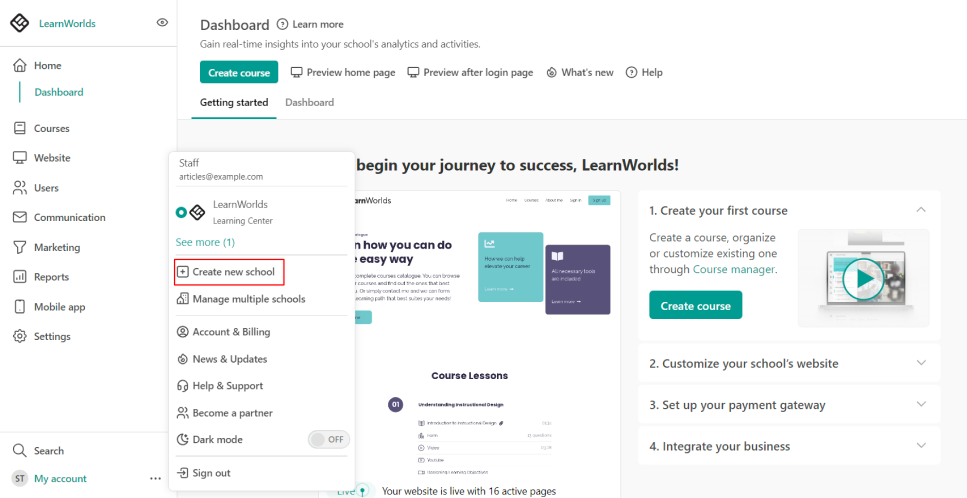
LearnWorlds is a lightweight, fast, and user-friendly SaaS LMS that I find perfect for creating, promoting, and selling online courses, as well as training employees and customers. It is SCORM-compliant and eCommerce-ready, which suits a variety of training needs. I appreciate its interactive authoring tools and the support for unlimited learners, quizzes, exams, and surveys.
One of the strong points for me is the security features, such as SSO and GDPR compliance, which ensure maximum data protection. I consider LearnWorlds a one-stop shop for all types of training—employee, customer, partner, and compliance training.
Best Suited For:
- Organizations looking for a comprehensive, all-in-one platform for creating, marketing, and selling online courses.
- Businesses that require a customizable and engaging learning environment with strong monetization capabilities.
- Companies in need of robust training tools for employees, customers, and partners that are easy to use and feature-rich.
Not Suited For:
- Organizations that require advanced reporting and analytics capabilities, as the platform only offers basic features in this area.
- Businesses looking for integrated email marketing tools within their LMS, as this feature is not natively supported.
- Users who need to upload course content in bulk, as the course creator does not support this function.
Pricing:
Starts at $24/month
11. Trainn – Best for Saas Customer Education
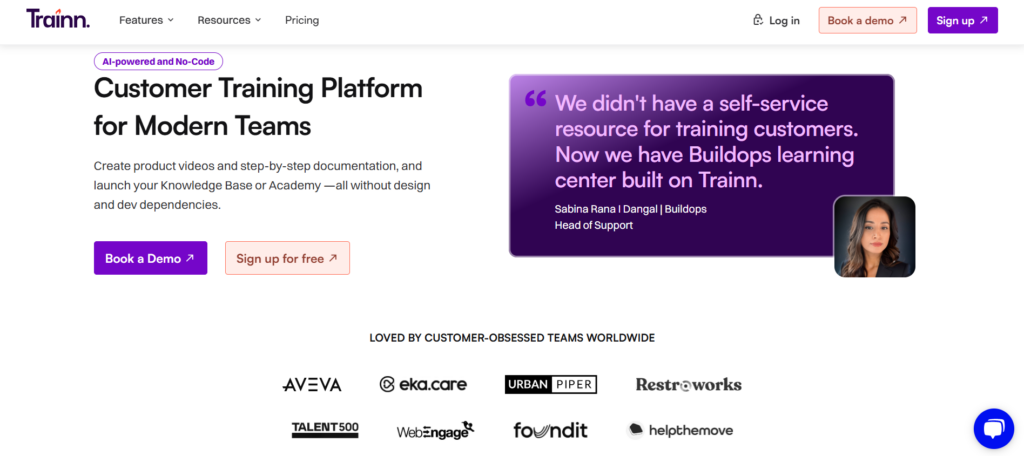
Trainn is a no-code LMS platform that provides customer education teams everything they need in one platform – create training content, build courses, and host a branded academy with zero coding required.
Trainn’s AI helps education teams create engaging training materials quickly, from professional videos and interactive demos to step-by-step guides in 25+ languages. Trainn’s no-code LMS turns these training content into courses with AI-generated quizzes, simulation assessments, and pre-built certificates. An adaptive learning feature lets training teams personalize course recommendations based on who logs into the academy.
Trainn’s analytics dashboard lets you track your academy’s success with detailed course and learner-level analytics. It can integrate with CRM tools like Salesforce to directly assign courses through CRM, and a stripe integration to set up paid courses to enable ecommerce facility.
Best Suited for:
- Customer education teams looking to launch a LMS quickly without IT support.
- Teams looking to train multiple audiences (customers, employees, partners) with a single LMS solution.
- Organizations looking for advanced authentication and enterprise-grade security at affordable prices.
Not suited for:
- Teams looking for a highly customizable LMS solution using a coding environment.
- Teams looking for a free-tier LMS tool
Pricing:
LMS pricing starts at $7.5/learner/month
Which Is the Best SaaS LMS?
The best LMS SaaS will entirely depend on your requirements, which are based on your audience type, skill level, and learning needs.
To simplify your search and help you narrow down the possible tools, here’s what I think you should consider:
Option A: ProProfs Training Maker
This LMS doesn’t require any specialized tech knowledge to get started. The tool makes it incredibly easy to create online courses in minutes. It is used by SMBs, large enterprises, freelancers, NPOs, and government agencies.
Option B: Absorb LMS
Absorb LMS is a versatile, customizable platform that supports complex training needs. The platform is known for boosting learner engagement and retention. It’s favored by major brands for its ability to scale and enhance corporate learning strategies effectively.
Option C: CYPHER Learning
This LMS supports site-wide automation. With 25+ automated actions, it saves users valuable time. The platform is generally used by trainer managers, L&D experts, HR professionals, teachers, course creators, and admins.
Overall, speaking from personal experience, I think ProProfs Training Maker is the best SaaS LMS software currently on the market. Based on my analysis, ProProfs is the best SaaS LMS because it offers a user-friendly interface, comprehensive automation features, and versatility in delivering training across industries and use cases.
Ready to Choose the Right SaaS LMS for Your Business?
Consider this moment as stepping into a new chapter of efficiency and growth. Choosing the right SaaS LMS is crucial—like picking the right tools for a successful mission. With the information, you can make an informed decision to propel your team’s learning and development forward.
So, let’s move beyond hesitation and embrace the opportunity to enhance your training strategy. The future of your training success awaits your choice—make it count!
 Tips
Tips
We’d love to hear your tips & suggestions on this article!
Get Free LMS Software — All Features, Forever.
We've helped 567 companies train 200,000+ employees. Create courses in under a minute with our AI LMS or use 200+ ready-made courses on compliance, harassment, DEI, onboarding, and more!

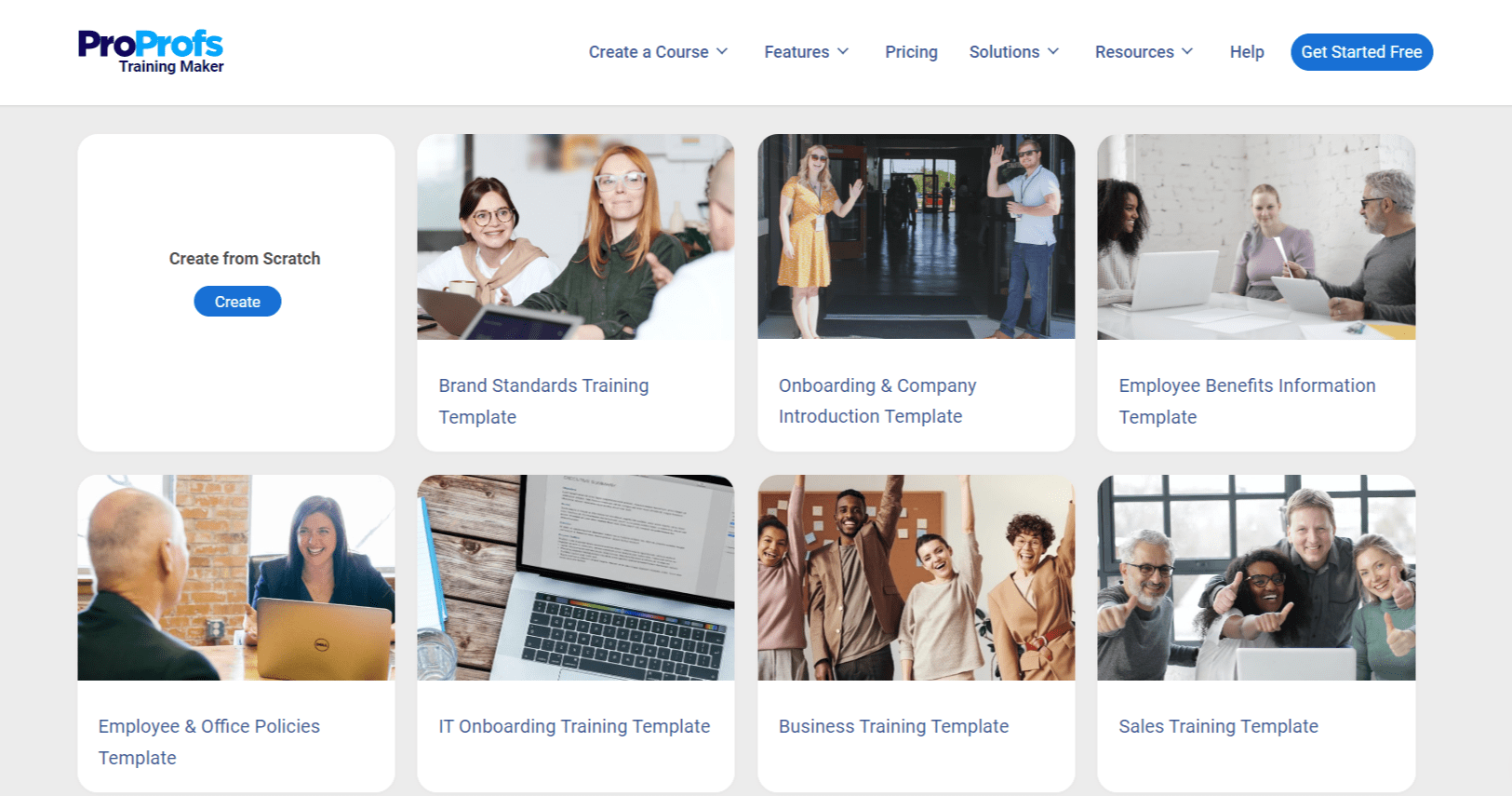
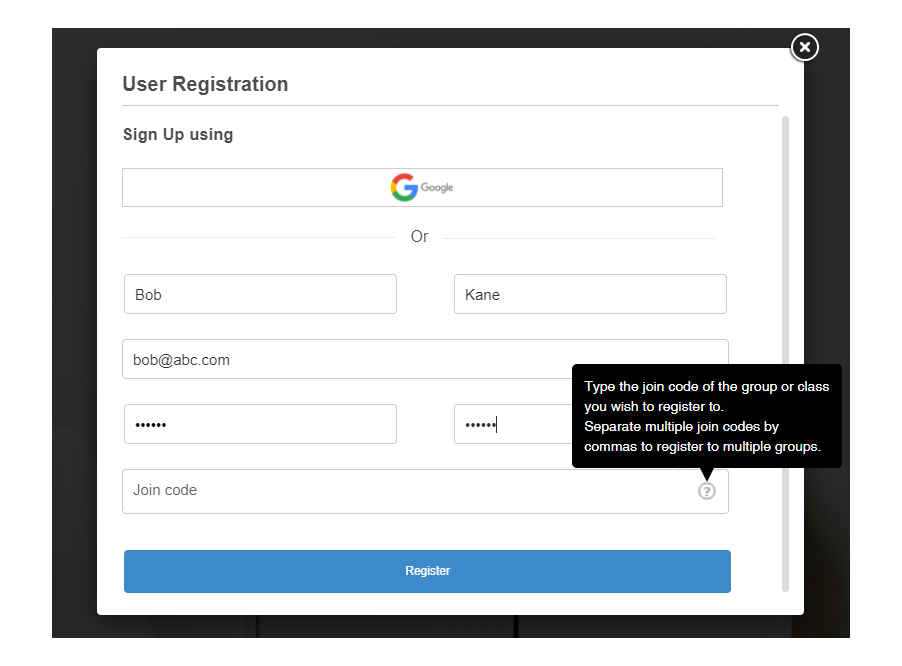
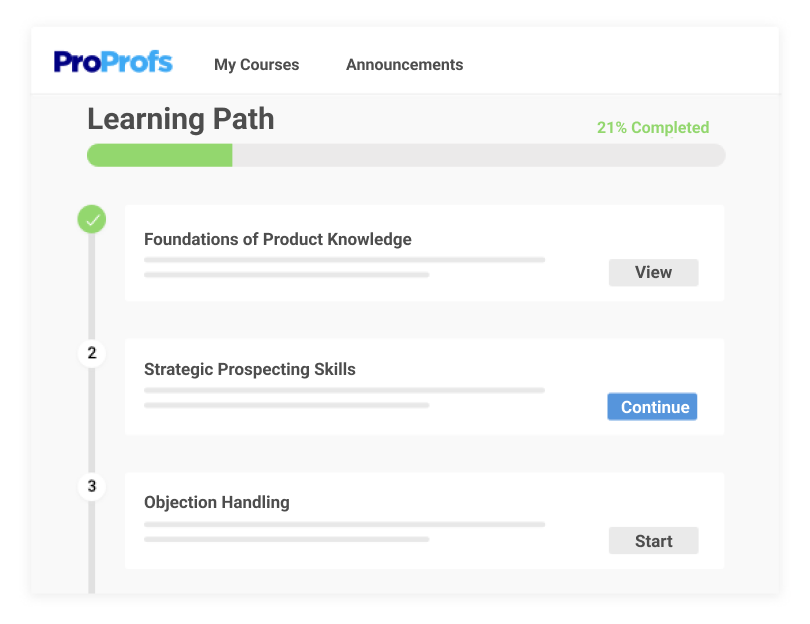
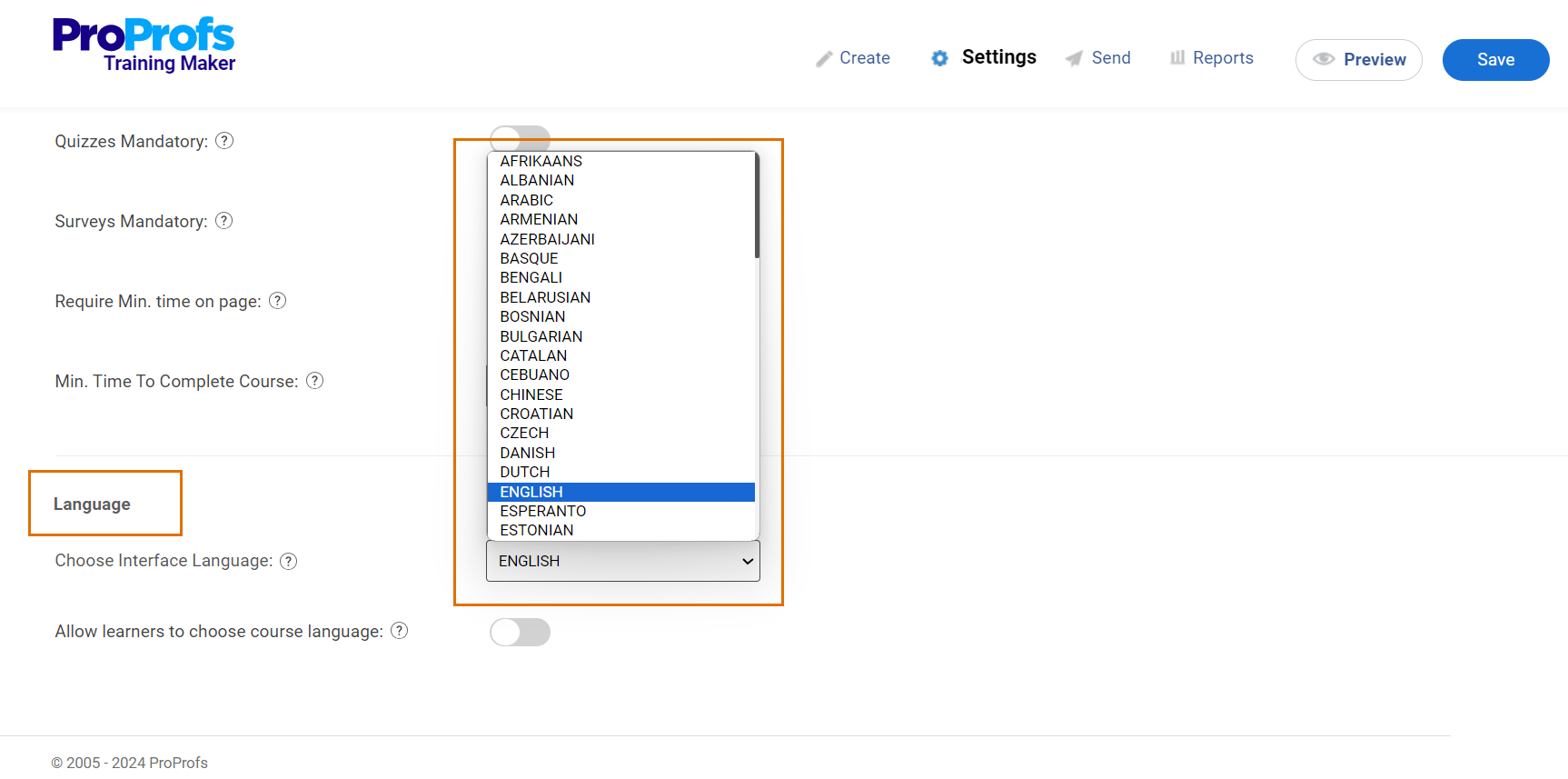
 We'd love your feedback!
We'd love your feedback! Thanks for your feedback!
Thanks for your feedback!






